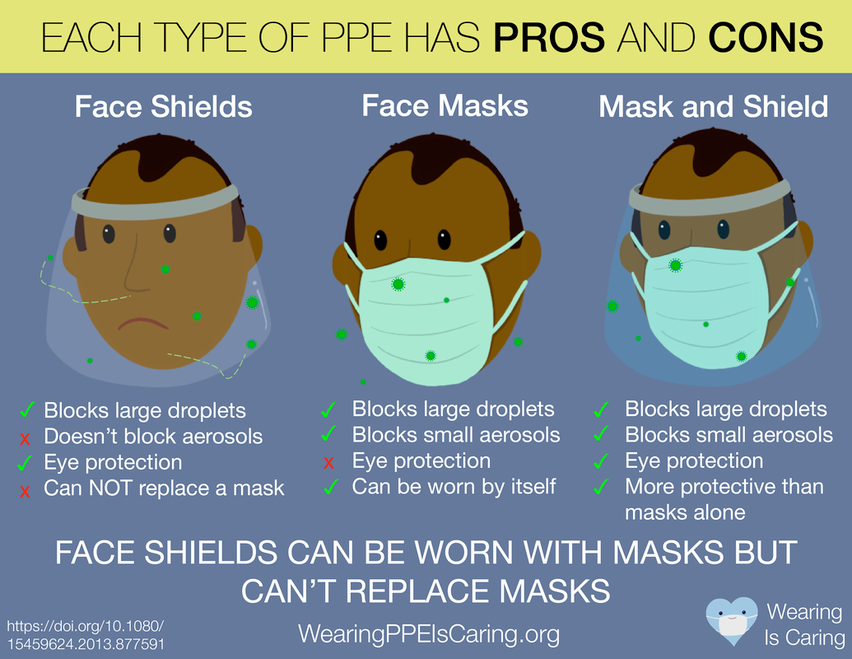A: NOPE. No face shield by itself.
As we’ve previously covered, use of face shields by themselves is not recommended.
A previous experimental study evaluated how well face shields protected the wearer, showing that smaller inbound particles can easily flow around the shield.
Now in a new pre-print (not yet peer-reviewed) by scientists from the National Institute for Occupational Safety and Health (NIOSH), several types of face coverings were tested for their level of “source control”- meaning how well they reduce expulsion of aerosols from infected people who are coughing, breathing, and speaking.
The lab-based study used a “cough aerosol stimulator”—to measure how many aerosols would get through different face coverings on a manikin and into a collection chamber.
On average, face shields blocked only *2%* of outbound aerosol particles, not statistically different from wearing no covering at all.
In contrast:
N95 respirators blocked 99% of aerosols,
Surgical/Medical mask blocked: 59%
3-ply cloth mask: 51%
Single layer neck gaiter: 47%
Double layer neck gaiter: 60%
These were for average size particles, but all masks EXCEPT face shields were better at blocking larger compared to smaller aerosols.
This is more good news for fans of sometimes disparaged neck gaiters (an elastic fabric tube that fits snugly around the head and neck), especially when doubled over—see our previous post for a discussion of “gaitergate”.
It’s important to keep in mind that this was a cough simulator, so not necessarily reflective of what is expelled talking and breathing, which may be less forceful (we understand these types of experiments are underway). Face shields can help protect the eyes and face from inbound large droplets, which is why they are useful for medical personnel as an *additional* barrier as well as face masks when in close contact with patients.
Also, if the 50% numbers sound concerningly low for non-N95 masks, remember that if *both* parties in an interaction are masked this 50% outbound protection adds up to a lot more.
Aerosols also dissipate with distance, so that extra layer of protection of not standing too close to people makes a difference, as does proper ventilation.
Remember the swiss cheese analogy—Most prevention strategies have holes, but when you stack them together, they can block most things!
#Masks #StaySMART



